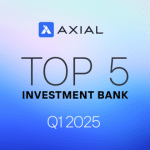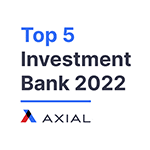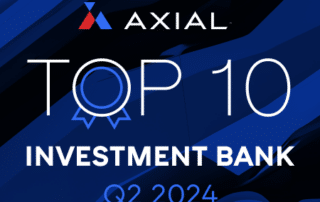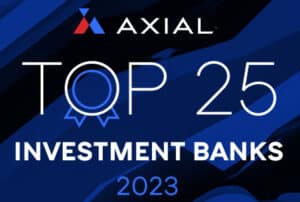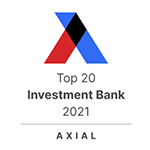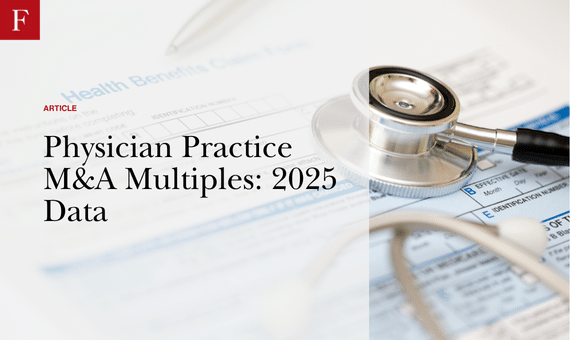
Physician Practice M&A Multiples: 2025 Data
Physician practice M&A activity in the U.S. remains strong in 2025, despite elevated interest rates and the continued normalization from the 2021–2022 peaks. Private equity and strategic consolidators remain active, particularly in high-growth specialties where scale and ancillaries create significant value.
For physician-owners, understanding current valuation multiples is essential not only for timing a potential sale but also for benchmarking unsolicited offers, partner buyouts, or decisions regarding recapitalization. Multiples serve as a financial shorthand for how investors perceive the practice’s stability, scalability, and reimbursement strength. Even a single turn in multiple can translate into millions of dollars in transaction value.
While aggregate multiples have eased from the highs of 2024, competition for well-run specialty groups continues to drive double-digit pricing across key segments. Practices that demonstrate growth potential, diversified payor mix, and advanced operational infrastructure consistently attract premium valuations.
Key Findings
Critical insights from the 2025 physician practice M&A market
Across publicly traded healthcare services companies, the median EV/EBITDA multiple declined to approximately 11.5x in 2025, down from 14.5x the prior year.
Cardiology and ophthalmology remain the highest-valued specialties in 2025
Platform transactions command 3–5 turns higher than add-on deals
Practices with strong payor diversification and ancillary revenue achieve multiples up to 2x higher
FOCUS Investment Banking clients achieve notably higher valuations (relative to inbound offers) due to pre-market optimization and competitive processes
Average EV/EBITDA Multiples by Specialty
Platform investments command premium multiples, while add-on acquisitions of smaller groups trade at mid- to high-single-digit levels.
| Specialty | Platform Transactions | Add-On Transactions | Notes |
|---|---|---|---|
| Primary Care (Family/Internal Medicine, Pediatrics) | 8x–12x | 3x–6x | Scaled, value-based platforms can reach low-teens multiples. |
| Cardiology | 12x–15x | 8x–12x | Scarcity of independent groups drives sustained premiums. |
| Orthopedics & Sports Medicine | 9x–13x | 6x–9x | ASC and imaging ancillaries lift platform valuations. |
| Gastroenterology (GI) | 10x–14x | 7x–9x | Endoscopy and ASC ownership materially raise multiples. |
| Ophthalmology (incl. Retina) | 12x–20x | 7x–11x | Public-company RCA transaction underscores high-teens retina platform comps; add-on ranges widen with ASC/clinic density. |
| Ob/Gyn / Women’s Health | 10x–14x | 5x–8x | Sector remains an active PE focus; prior large-cap women’s health platforms reportedly traded in mid-teens; current market shows some multiple compression. |
| Plastic Surgery & Aesthetics | 8x–12x | 4x–8x | Smaller, single-site aesthetics trade low- to mid-single digits; multi-site platforms or companies with significant plastic surgery volume can reach high-single to low-double digits. |
| Oncology / Urology | 14x–19x | 8x–12x | OneOncology deal includes a 19x EBITDA put/call; urology shows high PE penetration and steady add-on cadence. |
*These ranges reflect consensus data from 2024–2025 transactions compiled by Levin Associates, VMG Health, and FOCUS, supported by their respective deal experience. Methodology triangulates these benchmarks with recent high-signal transactions—most notably Cencora’s acquisition of Retina Consultants of America (retina MSO) and TPG/AmerisourceBergen’s OneOncology deal, which included a 19x EBITDA put-call. Broader sector context for women’s health, urology, and aesthetics is drawn from specialty white papers and market reports. Actual pricing varies with each transaction and varies by scale, ancillaries, payor mix, regional density, growth and durability profile, and many other factors. Intended for educational purposes only and not a guarantee of any outcome.
Scale Effect on Physician Practice Valuations
Larger groups with professional management and scalable infrastructure consistently attract higher multiples.
| EBITDA Range | Typical Valuation Range | Example |
|---|---|---|
| <$1M | 5x–7x | Single-site or small group practice |
| $1M–$3M | 7x–9x | Mid-sized specialty group with modest ancillaries |
| $3M–$5M | 9x–11x | Larger practice with multi-site operations |
| >$5M | 11x–13x | Platform-ready organization with ASC or risk-based contracts |
Key Insight: Scale translates directly into operational efficiency and reduced buyer risk. Practices with centralized office systems, established leadership, and documented compliance protocols demonstrate the infrastructure private equity firms seek in anchor investments.
Factors Influencing Multiples in Physician Practice M&A
Beyond financial metrics, qualitative elements such as physician retention, referral stability, and local market saturation can have a meaningful impact on buyer perception. A group with younger physicians under long-term contracts, for example, may receive a 1–2x premium relative to a comparable group nearing retirement transition.
| Valuation Driver | Effect on Multiples | Rationale |
|---|---|---|
| Medical Specialty & Ancillaries | +2–4x premium | High-margin specialties and ancillary income streams boost value |
| Payor Mix & Reimbursement | ±1.5–2x | Greater commercial and self-pay mix improves margins and predictability |
| Growth Potential | +1–3x | Expansion runway, new sites, or ancillary service additions signal scalability |
| Scale & Infrastructure | +2–4x | Larger, well-managed practices command higher multiples due to reduced risk |
| Geographic Density | +1–2x | Market dominance and referral control enhance negotiating leverage |
Specialty-by-Specialty Trends
Across U.S. physician practice M&A, valuation performance continues to vary significantly by specialty. Private equity and strategic buyers target subsectors differently based on procedural economics, scalability, and supply of independent groups.
Current specialty valuation highlights include:
Cardiology
Among the most sought-after segments, driven by the limited supply of independent groups and favorable procedural margins. Platform transactions often achieve mid-teens EBITDA multiples, supported by diagnostic testing revenue and outpatient cath lab expansion.
Ophthalmology
Many private equity platforms compete for remaining high quality, independent practices. Significant platform trades have injected new momentum.
Women’s Health
Viewed as a stable area for investment with many growth avenues (e.g., fertility, behavioral health).
Plastic Surgery and Aesthetics
The newest area for PE platform creation is experiencing high deal volume and competition, especially for platform assets. Investors are attracted to the cash pay model and increasing demand for aesthetic services.
Oncology/Urology
Heavy drug utilization has drawn interest and capital from upmarket companies seeking integration.
Gastroenterology
Sustained high demand for outpatient endoscopy and ancillary services has preserved strong cash flow profiles and premium valuations.
Orthopedics
Steady growth as surgical migration to ambulatory surgery centers (ASCs) accelerates and musculoskeletal demand rises with an aging population.
Primary Care
Once modestly valued, now seeing renewed investor interest via value-based and capitated care models. Practices demonstrating success in Medicare Advantage and ACO frameworks are reaching double-digit multiples comparable to specialty peers.
Dermatology and Dentistry
Previously high-growth sectors experiencing modest multiple compression after several consolidation waves, as investors emphasize operational integration and margin optimization. Specialty dental practices are highly sought-after.
How Buyers Underwrite Growth
When evaluating physician practice transactions, private equity sponsors model EBITDA expansion over a five- to seven-year hold period.
Typical underwriting assumes 15–20% annual EBITDA growth through a mix of organic expansion, new site openings, and integration of ancillary services.
Investors also anticipate synergy gains from shared back-office functions, including revenue cycle, HR, supply purchasing, and IT, which can yield margin improvements of 200–300 basis points within the first two years post-acquisition.
Groups that can demonstrate a clear, data-supported growth plan, particularly one tied to regional expansion or value-based care contracts, command the strongest valuations. Conversely, practices with limited growth visibility or physician turnover risk often see downward adjustments in buyer offers.
Platform vs. Add-On Valuation Dynamics
Private equity firms employ a two-tiered valuation model, offering premium multiples for platforms and capturing arbitrage through add-on acquisitions.
Platform Investment
Private equity sponsor (new specialty entry) focusing on management depth, scalability, and regional market entry
Add-On Acquisition
Existing PE-backed platform focusing on integration fit, new geography, or ancillary enhancement
By acquiring smaller practices at lower multiples and consolidating them into a larger network, PE investors create multiple arbitrage opportunities. The combined platform, once scaled and recapitalized, may ultimately trade at 12x–14x EBITDA or more upon exit.
How Private Equity Evaluates Physician Practices
Private equity remains the dominant buyer in physician practice M&A, representing more than 90% of transactions. Buyers assess:
Specialty attractiveness
Long-term demand, procedure growth, and reimbursement stability.
Payor diversification
Greater commercial and value-based participation reduces revenue risk.
Infrastructure maturity
Well-developed management and EHR systems enable rapid scaling.
Growth trajectory
Expansion potential within and beyond current geographies.
Scarcity continues to drive heightened interest in cardiology, gastroenterology, and orthopedics, while value-based primary care remains a rising area for investors seeking recurring revenue and payer partnerships.
How FOCUS Uses Data to Drive Outcomes
FOCUS monitors valuation trends using verified transaction data from its completed engagements and leading healthcare mergers and acquisitions (M&A) databases.
This includes information such as deal size, buyer type, and EBITDA multiple ranges across U.S. physician practice transactions.
By analyzing these datasets alongside current private equity deal flow, FOCUS identifies real-time shifts in buyer appetite, reimbursement outlook, and specialty-specific demand. These insights inform the firm’s strategic guidance on market timing, buyer selection, and transaction structure, helping physician-owners make informed decisions based on the latest industry data.
Contact Our Team
Ready to explore your practice valuation options? Connect with FOCUS Investment Banking for expert guidance.
Sources
PitchBook and Capital IQ transaction databases (accessed 2025, data on recent physician practice M&A deals).
Irving Levin Associates, Healthcare Services Acquisition Report (2025). Accessed at: levinassociates.com.
HealthValue Group, U.S. Healthcare M&A Mid-Year 2025 Report. Accessed at: healthvaluegroup.com.
Scope Research 2025 valuation insights. Accessed at: scoperesearch.coscoperesearch.co.
Provident Healthcare Partners interview on Gastro Health valuation (Becker’s ASC Review). Accessed at: providenthp.com.
FOCUS Investment Banking analysis and white papers. Accessed at: focusbankers.com.
Fierce Healthcare. AmerisourceBergen, TPG to acquire specialty practice network OneOncology in $2.1B deal. Accessed at: www.fiercehealthcare.com
Censora. Cencora Completes Acquisition of Retina Consultants of America. Accessed at: www.investor.cencora.com.





